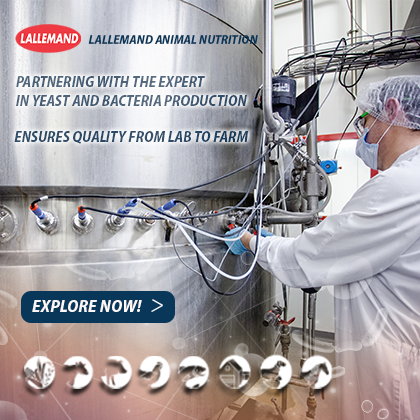Toxicity in small ruminants can manifest in two ways: acute, where sudden outbreaks affect many animals, and chronic, presenting as subclinical cases.

While there is limited research on the economic impact of toxic compounds in animal production, high mortality rates are reported in extensive systems due to intoxication. Associated losses include:
![]() Reduced reproductive and production indices.
Reduced reproductive and production indices.


![]() Increased vulnerability to other diseases.
Increased vulnerability to other diseases.
![]() Costs linked to diagnosis, treatment, and control measures for affected animals.
Costs linked to diagnosis, treatment, and control measures for affected animals.
| In extensive systems, toxicities are often linked to climatic factors, pesticide use, or food scarcity. Meanwhile, intensive systems are more prone to iatrogenic causes. This article covers the most frequent toxic agents, their routes of exposure, clinical presentations, and diagnostic approaches.. |
Main Sources of Toxicity in Small Ruminants
Certain plants contain toxic compounds like alkaloids, oxalates, or glycosides. Key considerations include:
- Toxicity may vary during different growth stages.
- Toxic concentrations differ among leaves, roots, or fruits.
- Some compounds persist after drying, while others degrade in live plants.
Knowing the toxic plants specific to the region is critical, as climate and soil characteristics influence their presence.
Ruminants are relatively resistant to mycotoxins due to ruminal metabolism, but they can still suffer varied clinical effects depending on:
- The type, concentration, and combination of mycotoxins.
- The animals’ age and reproductive state.
Aflatoxins and trichothecenes are particularly concerning. Acute exposure can cause gastrointestinal issues, weakness, and even death.
![]() Aflatoxicosis can lead to hemorrhages, liver damage, generalized edema, and hepatic encephalopathy.
Aflatoxicosis can lead to hemorrhages, liver damage, generalized edema, and hepatic encephalopathy.
![]() Trichothecenes often result in hemorrhagic gastroenteritis and cardiovascular shock.
Trichothecenes often result in hemorrhagic gastroenteritis and cardiovascular shock.
Zearalenone, with its estrogenic activity, affects reproduction and milk production.
| Mycotoxins also impair growth rates, alter microbiota and intestinal integrity, cause liver damage, and induce immunosuppression. |

Heavy metal toxicity often occurs through accidental ingestion of contaminated concentrates, forage, or pastures.

- Selenium toxicity frequently results from dosage errors in preventive treatments. Acute cases include anorexia, tachycardia, and death, while chronic cases involve weight loss, lameness, and haircoat issues.
- Copper poisoning is a significant concern in sheep, causing acute intestinal necrosis or
 chronic symptoms like jaundice, hemoglobinuria, and anemia. Secondary toxicity may arise from plants like Senecio or clover that influence copper metabolism.
chronic symptoms like jaundice, hemoglobinuria, and anemia. Secondary toxicity may arise from plants like Senecio or clover that influence copper metabolism.
Contamination of water or forage with nitrates/nitrites causes methemoglobinemia and tissue hypoxia. Symptoms include discolored (chocolate-colored) blood, muscle tremors, cyanosis, and respiratory distress.
Insecticides and Herbicides
- Organochlorines, widely used in agriculture, can contaminate soils and cause
 anorexia, ataxia, paralysis, and death.
anorexia, ataxia, paralysis, and death.
- Organophosphates and carbamates are highly toxic, causing symptoms like salivation, respiratory distress, and tremors due to overdose or exposure in recently fumigated areas.
- Glyphosate and other herbicides can induce gastrointestinal distress and, in severe cases, liver damage or shock.

Diagnostic Approach to Toxicity
Diagnosing intoxication requires a clinical-pathological approach and gathering information to narrow down potential toxins:
- Animal demographics (age, sex, physiological state).
- External factors (feed, water quality, pasture changes, or nearby agricultural activities).
- Clinical signs and lesions indicating affected organs/systems.
| Proper sampling of suspected sources (water, plants, feed) and affected animals (blood, organs) is crucial for confirming exposure to toxins. |
Advanced Analytical Techniques
High-performance liquid chromatography with mass spectrometry (HPLC-MS) is widely used for detecting a range of toxic substances with high sensitivity and specificity.
Case Studies
- Herbicide Poisoning
 Sudden deaths in a sheep flock were traced to herbicide exposure near grazing areas. Clinical signs and toxicological analysis confirmed glufosinate contamination, leading to immediate pasture relocation and cessation of further losses.
Sudden deaths in a sheep flock were traced to herbicide exposure near grazing areas. Clinical signs and toxicological analysis confirmed glufosinate contamination, leading to immediate pasture relocation and cessation of further losses. - Copper Toxicity
In replacement lambs fed contaminated forage, symptoms of acute jaundice and liver damage were observed. Lab analysis confirmed copper levels above toxic thresholds, linked to the use of copper-based agrochemicals.

Conclusions
Toxicity in small ruminants poses challenges for both extensive and intensive production systems, with climatic factors, agricultural practices, and feed shortages contributing to acute and chronic cases.
Preventive measures and accurate identification of toxic agents are vital to mitigate their impact on flock health and productivity.
For a more detailed exploration of this topic, refer to the original article on rumiNews.com.
